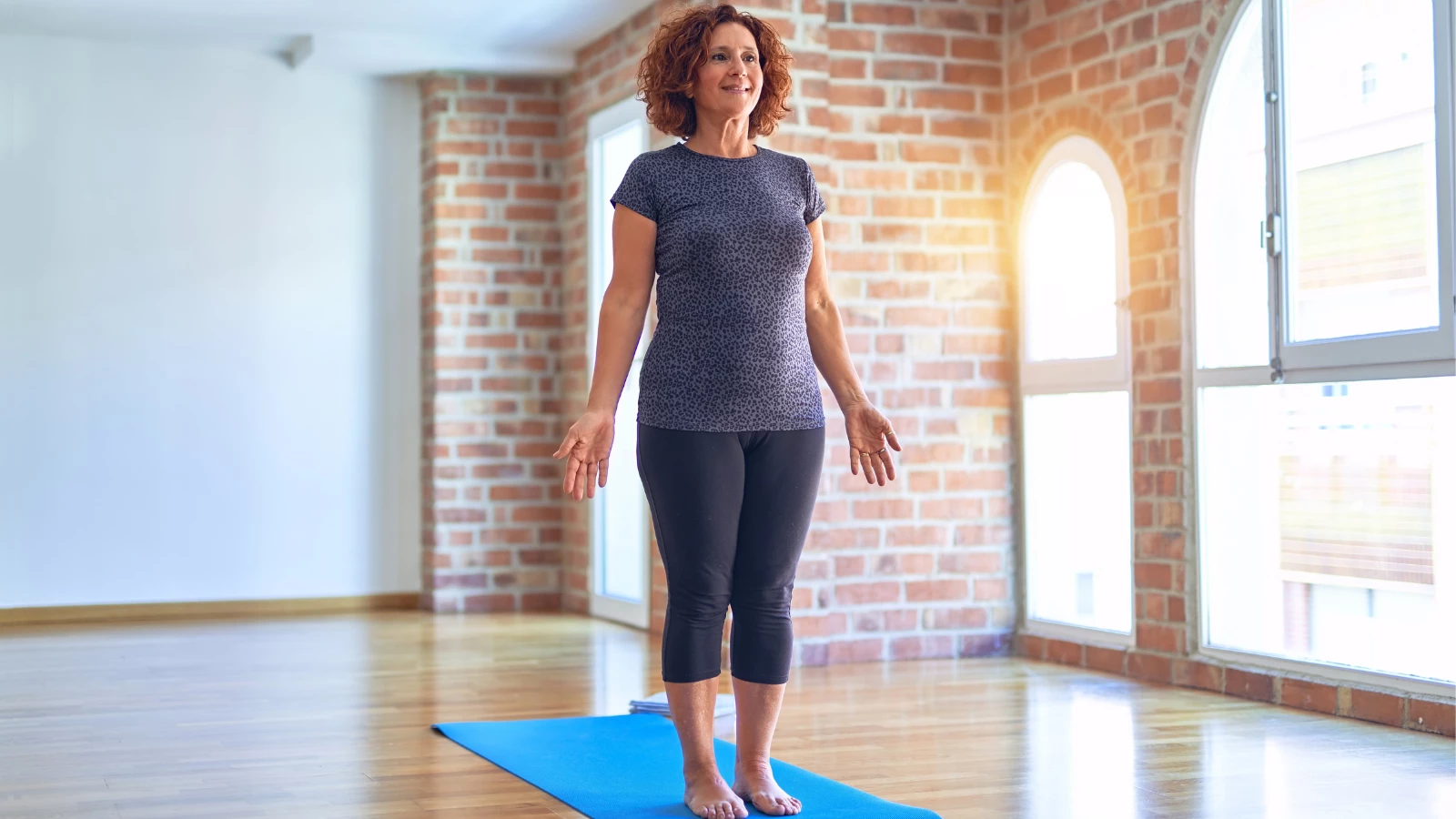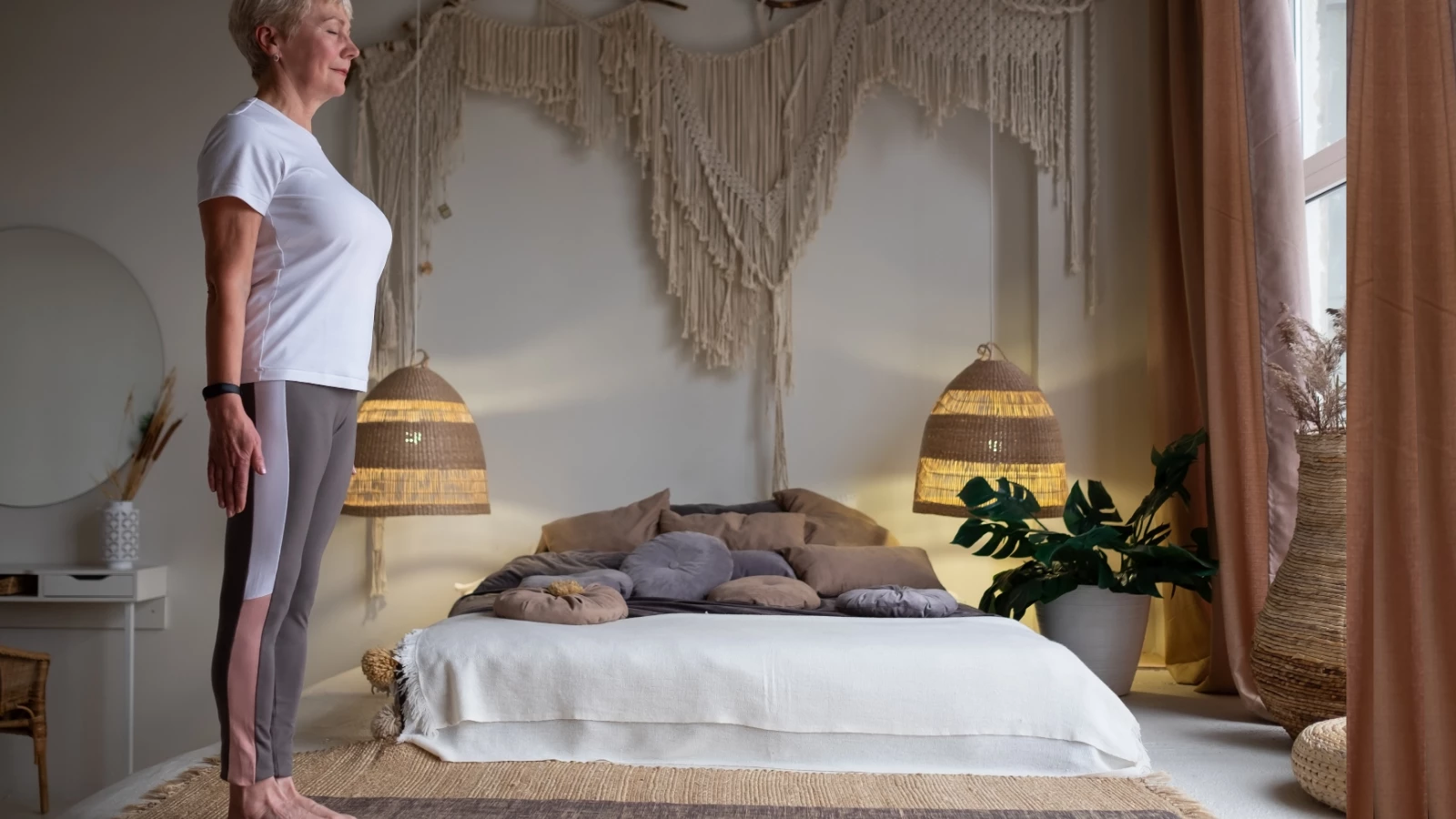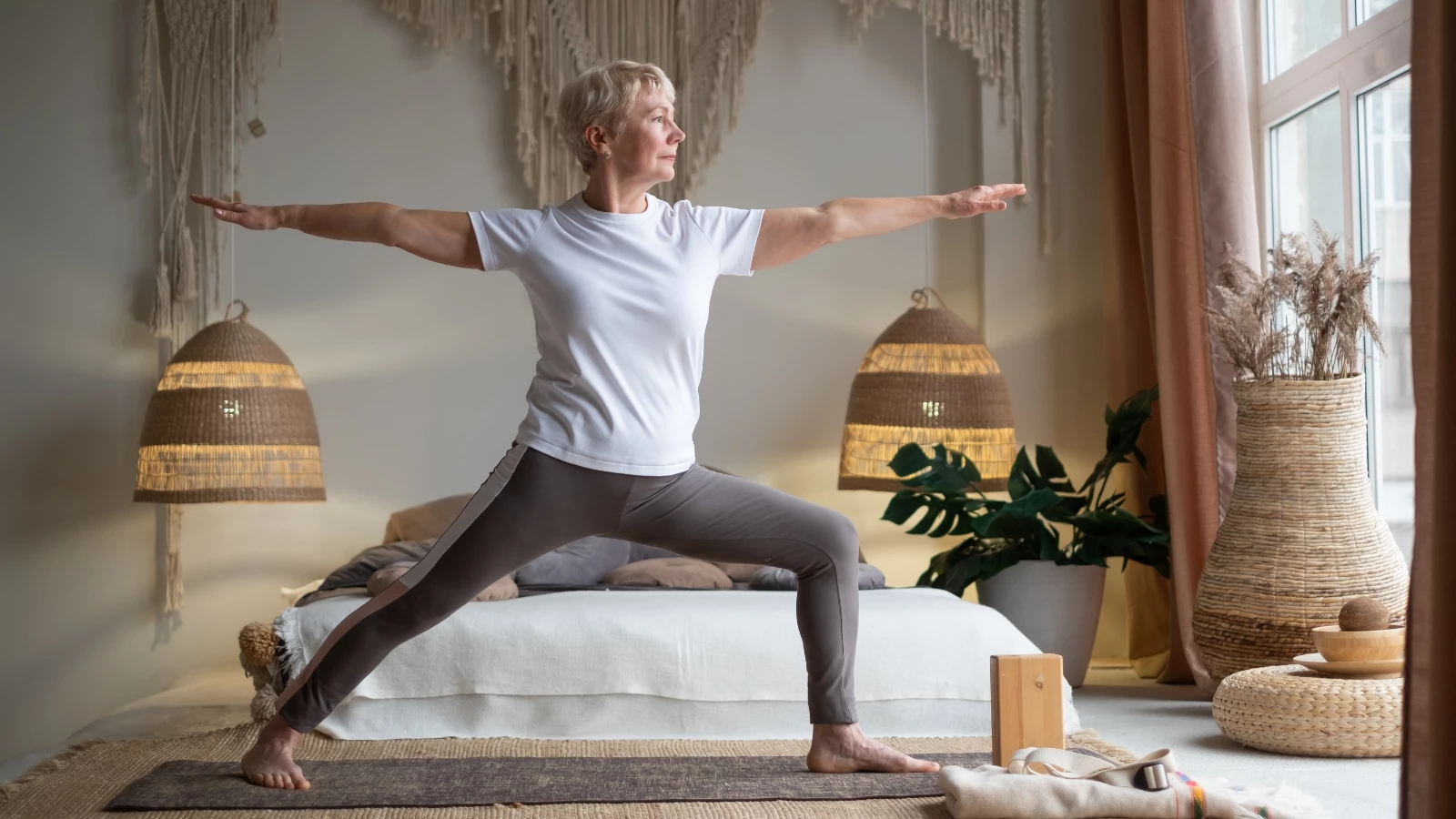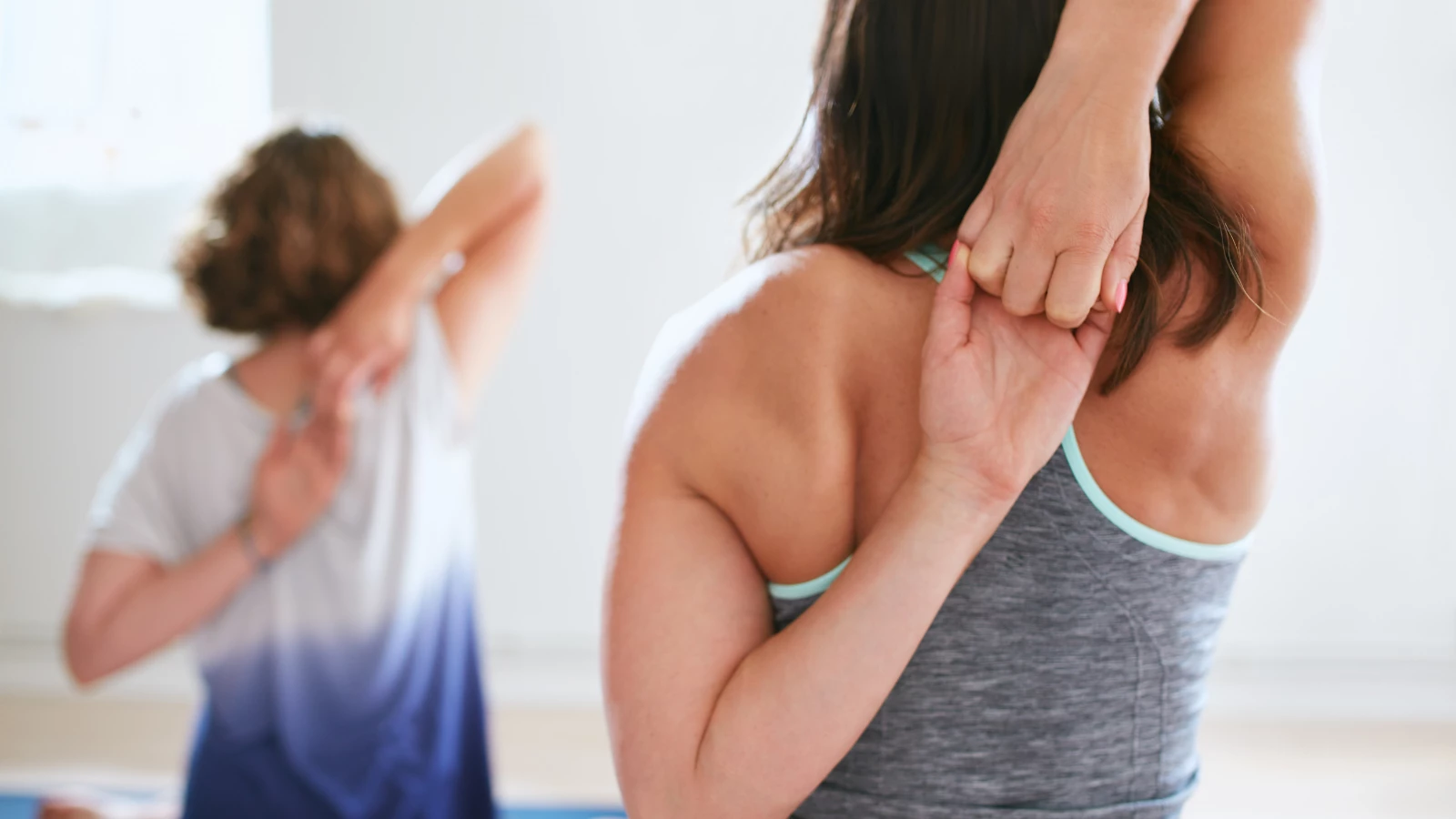Yoga Anatomy Language: Part 1

I find that many times it is not the actual anatomy that is hard to understand. What’s difficult is dealing with all of the terminology. It is its very own language. I always joke with my students that we use anatomical terms just to make us doctor types sound smarter. So let’s review some terms that we need to know in order to talk about more interesting things—and sound smarter for it!
How to Understand Movement in Anatomical Position

Anatomical position is very similar to standing in Mountain Pose (Tadasana). It is basically standing up straight with toes and palms pointing forward. Anatomical position is important to us because this is where it all starts. Whenever we talk about a movement—flexion, extension, abduction, adduction, internal and external rotation—we are assuming that the movement starts from an anatomical position.
Defining how one part of the body is moving can get confusing when there are multiple parts moving, or when the body is oriented differently. If how to name a movement gets confusing, just think, “If I were to make the same movement, or activate the same muscles while in anatomical position, what would the movement be called?”

For example, in Warrior II Pose (Virabhadrasana II), the front knee has been flexed and abducted from anatomical position to get into the pose, and the back thigh has been abducted. This is fairly easy to see even without going back to anatomical position. If you don’t remember what flexion and abduction are, stay tuned for the next post, Yoga Anatomy Language: Part II, and we’ll review!

In a more complex example, let’s look at the arms in Cow Face Pose (Gomukhasana). The upper arm has been taken into flexion, abduction, and external rotation in order to get into the final position while the lower arm goes through extension, adduction, and internal rotation. This one is much harder to see if you don’t take it back to anatomical position! If you break down the action of each arm, you will see that it takes all of those motions to move each arm from anatomical position to its final location. Now knowing what motions the arms make, we can determine what muscles are involved and then how to prepare for the pose.
Also, read...
No Muscle Is an Island – Are You Making This Common Strength Training Mistake?
Discovering the Living Body: A Yoga Teacher’s Revolutionary Insight on Fascia
The Fascia Connection: Tom Myers on How Postural Habits Get Locked into Our Fascial System
Related courses
Dr. Nolan Lee is a yoga teacher and physical rehab specialist in Chicago, IL, with an extraordinary passion for understanding how the body moves and functions. Nolan has the unique ability to blend the science of anatomy with the art of yoga. With an active practice at this clinic, Balanced Flow Wellness, he practically applies yoga to restore and maintain health. Dr. Lee also holds a Master of Acupuncture degree and is a NASM-certified corrective exercise specialist (CES). He enthusiastically shares his knowledge of yoga and anatomy in lectures, workshops, and on his blog.



